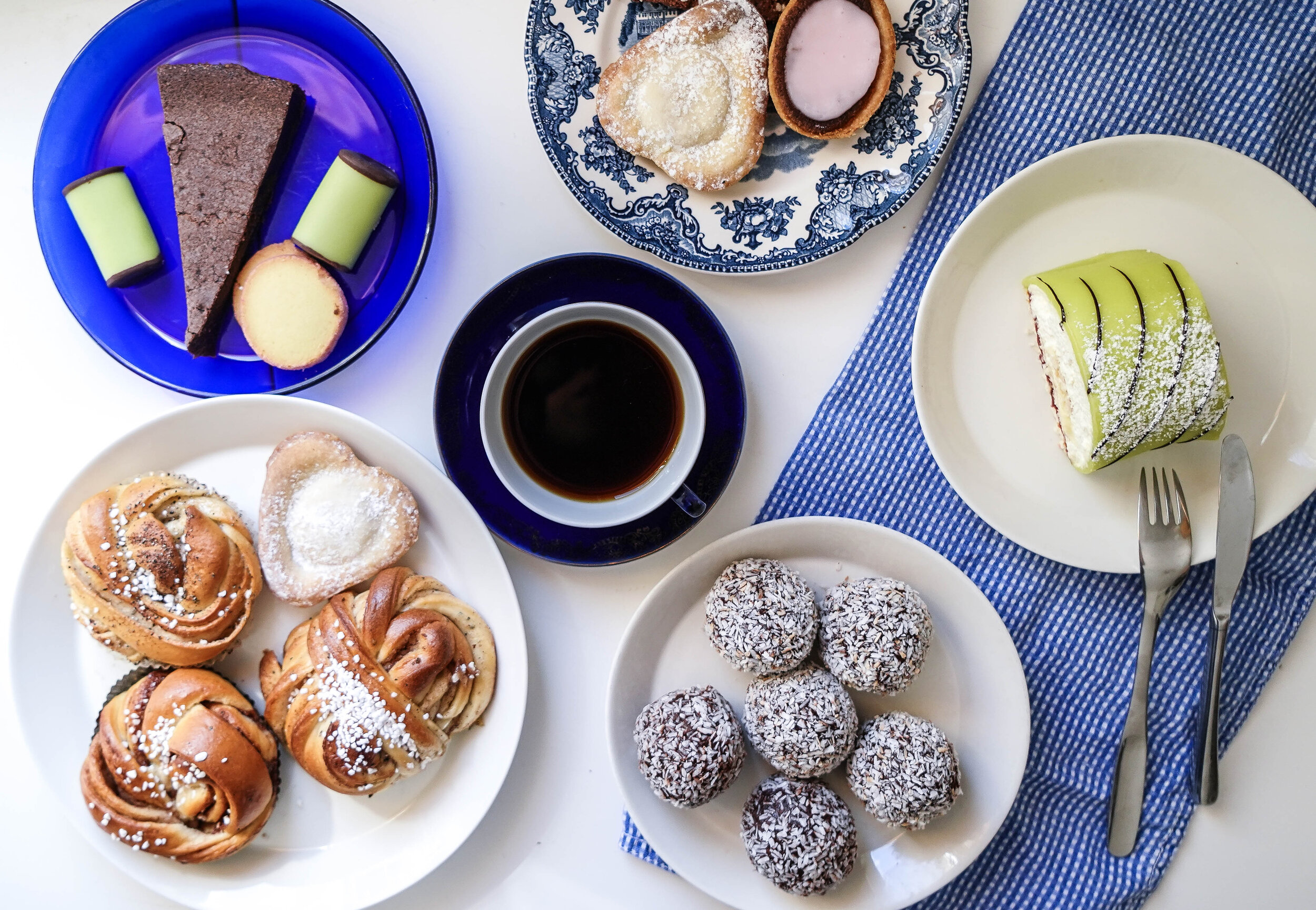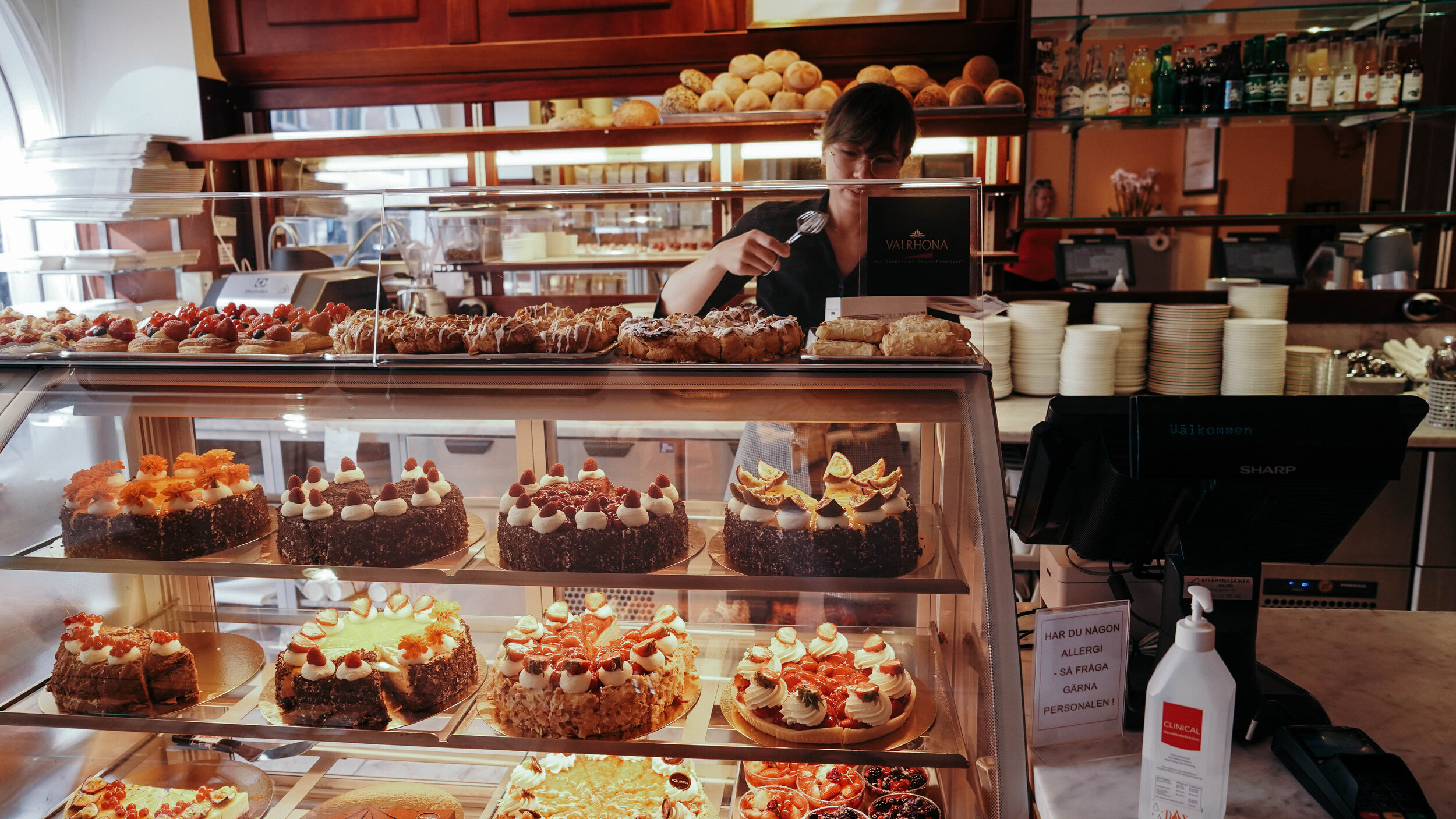The Traditional Swedish Fika and its Pastries
Text and Photos by Clarissa Wei
For most of the Western world, coffee has been a social lubricant since the 16th century—a beverage that demands its own four walls, an excuse to meet up during the middle of the day, or a reason to parlay a pleasant dinner into dessert and more conversation. In most cultures, this is called a coffee break. But in Sweden, one of the top ten most coffee consuming countries in the world, there’s a singular word for it: fika. It’s used both as a verb and a noun:
“Would you like to go for a fika?”
or
“Let’s fika at home today.”
In recent years, the concept of fika has been hyped beyond recognition, appropriated in coffee shops in New York and as far as Taipei as a cool, new Nordic coffee experience. Think neat white countertops and baristas with masterful pour overs and exquisite latte art. The international interest in the fika is very much correlated to the explosion of New Nordic cuisine circa 2004, which has been viewed with a rose-tinted gaze as this mythical, hyperlocal, and mindful culinary experience.
Of course, sleek cafes exist in the larger cities in Sweden and fair trade coffee beans are available for a more socially conscious crowd. But the truth is that the standard fika experience in Sweden is much more toned down, with unlimited refills and dark-roasted coffee served in mismatched, porcelain cups. Or it can just be at a friend’s home, with a single family-sized pot to go around the table.
“We have around 400 customers a day and 75 percent of them prefer filtered coffee,” says Filip Åkerblom, owner of Lilla Kafferosteriet, a coffee shop in Malmö. Since 2006, Åkerblom has been buying directly from farmers and roasting his own beans, “to bring awareness” around single origin and ethically sourced coffee. But he also knows his audience well, and he says older generations of coffee drinkers from the 1970s and ’80s grew up with just one to two brands and prefer to keep it that way.
But what is the most distinct about the Swedish coffee experience compared to elsewhere around the world is that it’s an actual break, and not just coffee by the desk or coffee on the go.
“There’s a social aspect to it,” says Åkerblom.
Johanna Kindvall, co-author of Fika: The Art of The Swedish Coffee Break, agrees.
“When I moved here to New York, I was surprised that we had coffee but there was no break,” she says.
Kindvall grew up in Sweden, where workplaces have designated fika spaces, and where it’s the norm to congregate together while sipping coffee.
“When I started to work here [in New York], it took me much longer to get to know my coworkers because we didn’t have those moments,” she says. “I felt that if I had the fika with them or something, it would have been easier for me.”
Anna Brones, Kindvall’s co-author, says the deliberate pause is the most important aspect of the fika.
“It’s just a moment to slow down and take a break,” says Brones, who grew up in the States. “In the U.S. we have a tendency to get a coffee to go and drink it in the car. It’s not to say Swedes don’t do that, but I think this idea of taking a step back and taking a break for five to ten minutes is really important to our general well-being.”
Aside from the coffee itself, the fika experience also embodies a pastry or two. While a lot of cafes in Sweden now have an international repertoire of French pastries, American muffins and Italian tarts, there’s always a hearty selection of traditional Swedish baked goods at hand, which tend to be heavy on butter, milk and sugar. Brones and Kindvall note in their book that a lot of these fika pastries were traditionally homemade and are often correlated to different occasions. Princess tortas are for birthdays, cinnamon buns have their own dedicated day in October, gooey cakes are a late-night comfort dessert and chocolate balls are great with kids. Here’s a guide:
Cinnamon or Cardamom Buns (Vetebullar)
These are one of the most popular fika treats, a sweet twisted bread embedded with cinnamon or cardamom and glazed with light egg wash. Unlike American cinnamon buns, which are cloying and topped with a layer of icing, the Swedish iterations are more delicate, with more spices than sugar, and often garnished with a dash of pearl sugar. According to Franciane Tartari, a pastry chef who’s worked in Sweden for the last five years, Swedish cinnamon buns tend to be more moist.
“Before I was doing sweet bread base, but I learned in Sweden that it’s softer,” she says. “To make the dough you need a brioche and it’s better to be left overnight in the fridge so you get more moisture.”
Chocolate Balls (Chokladbollar)
These are one of the first sweet things kids learn how to make in Sweden, mostly because it’s a no-bake recipe with really simple ingredients like butter, sugar, cocoa powder and oats. A bit of brewed coffee is sometimes added for extra flavor and to help melt the butter. Simply mix it all together, compress into smooth balls, and coat with shredded coconut. “As a kid, sometimes I’d get so lazy I’d eat it straight out of the bowl,” says Kindvall.
Small Cookies (Småkakor)
Shortbread cookies are universal, and they’re so central to the fika experience that in the 1800s, it was commonly said that a proper housewife should entertain with at least seven or more of these cookies. In 1945, a crowdsourced recipe collection of fika pastries was created, called Seven Kinds of Cookies (Sju Sorters Kakor), a nod to all the different variations of these shortbread cookies. Today, the book is a classic and a family heirloom, and it remains one of the most comprehensive cookbooks of Swedish fika treats. Pictured above is your classic shortbread cookie, made simply with butter, sugar and flour, and a variation of that called Märta's Sliced Chocolate Cookies, made with cocoa powder and topped with pearl sugar.
Gooey Cake (Kladdkaka)
My husband, born and raised in Sweden, made this for me before I even knew it was a classic, and I thought it was his delicious take on an American brownie. That made him scowl.
“It’s not a brownie. It’s gooier in the center,” he insisted.
The kladdkaka is a chocolate cake with a sticky consistency in the middle because it’s only lightly baked, for about 15 minutes. Traditionally made with flour, butter and cocoa powder, Kindvall says she likes to make hers with finely ground almond flour, for the consistency.
“These ones are airy and gooey in the center. Almost more in line with the French flourless cake,” says Brones.
Vacuum Cleaner (Dammsugare)
This playful sweet is called a vacuum cleaner because it resembles Swedish vacuum cleaners of the 1920s, and because the insides contain every last crumb—they’re made with leftover cookies or cake flavored with cocoa powder.
“Nothing is wasted” says Diana Lund, a pastry chef at Grillska Huset Café in Stockholm. “You can put anything you want, as long as it’s fresh. That’s why it’s called a vacuum cleaner.”
It’s spiked with a tiny bit of Swedish punsch, a liquor made with a variety of spirits, and then wrapped in a green marzipan. “It has a strong flavor to it,” warns Brones.
Vanilla hearts (Vaniljhjärtan)
Vanilla hearts are shaped the way they sound and comprise a shortbread exterior filled with custard.
“The difficult part about this is the shortbread crust, and inside we put vanilla cream by cooking together milk, sugar, vanilla, egg yolk and starch,” says Lund. They’re dusted with powdered sugar and are a pretty ensemble to any coffee table.
Princess cake (Prinsesstårta)
This is a delightful cake that’s brought out especially for birthdays: a sponge cake with a layer of jam and cream, covered with a bright green marzipan shell and often garnished with a hot pink flower on top. Its green exterior makes it a recognizable staple for Swedes. Brones, who is Swedish-American, says she met another fellow Swedish-American in her freshman year in college, and together they insisted on making a princess cake together as an ode to their heritage.
“My mom had bought me one of the green marzipan rounds for the cake. We didn’t have a whisk so we whisked the cream with a fork,” she reminisces fondly.
Almond tart (Mazariner)
This is a sweet tart filled with ground almond paste and then topped with a generous layer of white or pink icing. Think of it as sort of an almond cup cake, but with a pastry shell base stuffed with butter, sugar and crushed almonds. This treat is rarely made at home, mostly because it’s difficult to get the pastry dough just right.
“You have to roll it really thin and we do that with a machine at the bakery,” Lund says. “The filling though, is pretty easy.”










